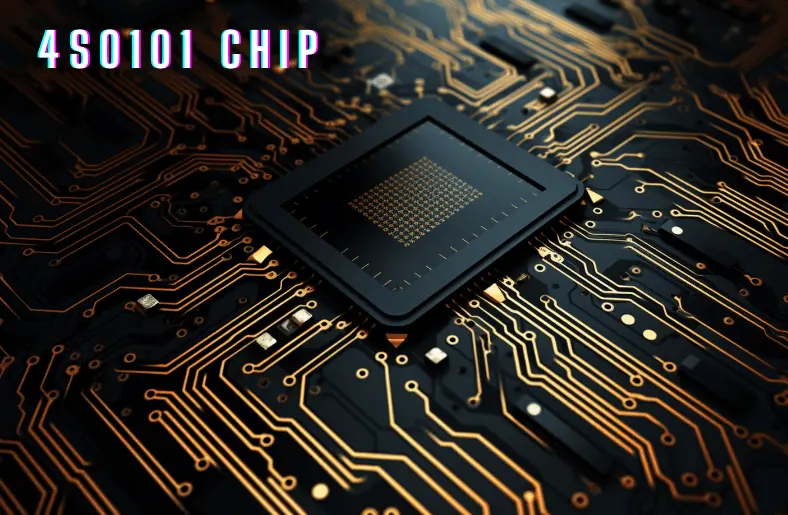In today’s fast-evolving tech landscape, specialized components like the 4S0101 Chip are gaining prominence. As technology advances, effective implementation becomes crucial for maximizing performance. Moreover, understanding the 4S0101 Chip’s role can significantly impact your project’s success. To start with, it is essential to grasp the chip’s unique capabilities. Consequently, this article will guide you through the chip’s advantages and practical tips for seamless integration. By doing so, you will be better equipped to tackle challenges and optimize your use of this powerful component.
Understanding the 4S0101 Chip
The 4S0101 Chip is a versatile component in modern electronics. Initially, it functions as a microcontroller, executing specific tasks with precision. Notably, this chip stands out due to its specialized design, offering high efficiency. Consequently, it is ideal for various applications, including smart devices and industrial systems.
Furthermore, its compact size does not compromise its performance, making it a valuable asset. Additionally, the 4S0101 Chip supports multiple communication protocols, enhancing connectivity. Overall, its robust capabilities make it essential for innovative projects. Thus, understanding its functions and benefits is crucial for effective utilization.
Advantages of Using the 4S0101 Chip
- Compact Size
The 4S0101 Chip is incredibly small, which allows it to fit into various compact devices. Its size makes it ideal for projects where space is limited. Despite its small form, it delivers powerful performance without compromising efficiency, making it versatile across different industries. - Energy Efficiency
One of the major advantages of the 4S0101 Chip is its energy efficiency. Because it uses less power, it is perfect for gadgets that run on batteries. This efficiency not only extends battery life but also reduces overall operational costs, making it a sustainable choice for long-term projects. - High-Speed Performance
The 4S0101 Chip processes data at high speeds, significantly enhancing the overall performance of applications. Whether used in IoT devices or robotics, its fast processing allows for smoother operations and faster responses. This capability is crucial for time-sensitive projects. - Multiple Communication Protocols
The chip supports various communication protocols, making it easy to integrate with other systems and devices. This flexibility simplifies the development process, allowing developers to connect it to different platforms without compatibility issues. It ensures seamless communication within complex systems. - Reliability in Harsh Environments
Designed to withstand harsh conditions, the 4S0101 Chip operates efficiently in challenging environments. Whether exposed to extreme temperatures or moisture, it continues to perform reliably. This resilience makes it suitable for outdoor applications or industries with demanding operational conditions. - Strong User Community Support
The 4S0101 Chip has a large community of users, offering shared resources, tips, and solutions. This community support speeds up troubleshooting and development, as developers can rely on the experiences of others. Access to shared knowledge enhances creativity and problem-solving abilities.
Planning Your Implementation
When planning your 4S0101 chip implementation, start by identifying your project’s core requirements. Next, ensure the chip fits the system’s specifications and can handle the expected load. Then, evaluate power consumption and efficiency for long-term sustainability. Also, consider communication protocols for seamless integration with other devices.
Moreover, define your budget early, balancing between performance needs and cost. After that, map out testing phases to ensure smooth execution. Additionally, create a backup plan in case of unexpected issues during development. Finally, finalize your timeline with clear milestones for each stage of implementation.
Design and Integration Tips
To begin with, ensure your design aligns with the 4S0101 chip’s specifications. Then, carefully consider the layout to optimize space and performance. Next, focus on minimizing signal interference by following best practices in PCB design. Afterward, ensure that power distribution is efficient to avoid voltage drops.
Also, review the chip’s communication protocols for compatibility with other devices. Then, test integration in small steps to catch issues early. Additionally, always use proper grounding techniques to enhance stability. Finally, document the entire process to streamline future updates and troubleshooting.
Testing and Troubleshooting
First, always begin with a thorough review of the circuit connections. Then, test the 4S0101 chip in small sections to identify issues early. After that, ensure the power supply is stable and provides the correct voltage. Next, use diagnostic tools to measure signal integrity.
Also, check for any overheating during the testing phase. If any errors arise, isolate the faulty components for deeper analysis. Moreover, review the software configurations to ensure they match the hardware setup. Finally, document any troubleshooting steps to simplify future problem-solving processes.
Challenges and Solutions
First, one common challenge is ensuring compatibility with existing systems. To solve this, check the chip’s specifications and verify hardware requirements. Next, power fluctuations can cause malfunctions. So, use voltage regulators to stabilize the power supply. Moreover, thermal issues often arise during extended use. To address this, always implement effective cooling solutions.
In addition, complex integrations can lead to software conflicts. Thus, it’s crucial to test configurations thoroughly. Furthermore, troubleshooting minor errors can be time-consuming. Instead, isolate each issue to speed up resolution. Finally, ongoing monitoring can help prevent future complications.
Future Trends and Developments
First, emerging trends show a move toward more efficient chip designs. Now, smaller chips with higher processing power are becoming standard. Next, there is a focus on improving energy efficiency. So, future designs aim to reduce power consumption without sacrificing performance. Moreover, integration with AI systems is rapidly advancing.
In addition, enhanced security features will become vital. Thus, encryption and secure boot technologies will play a key role. Furthermore, chips designed for specific applications, like IoT, are gaining popularity. As a result, specialized chips will dominate niche markets. Lastly, continuous innovation in material science will drive further chip advancements.
Also Read: Enhancing Business Intelligence Efficiency
Conclusion
In conclusion, the 4S0101 chip offers many advantages for various applications. Now, effective implementation requires careful planning and understanding of its features. Next, integrating the chip with proper design methods ensures optimal performance. Moreover, troubleshooting is key for smooth operation. Finally, staying aware of future developments will help keep your systems up to date. Thus, with the right approach, the 4S0101 chip can greatly enhance your projects.




